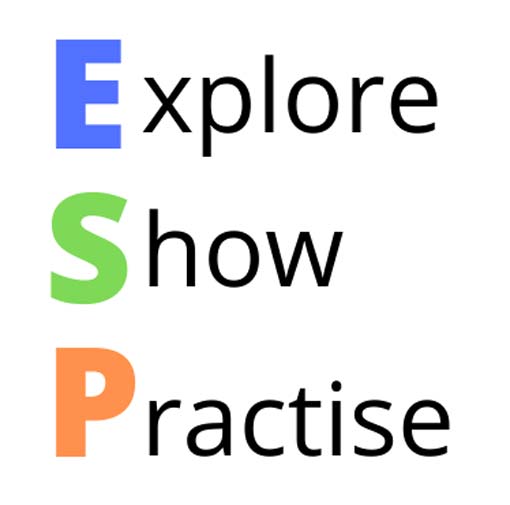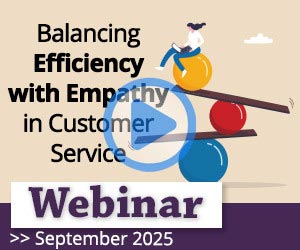Charlie Mitchell investigates how to deal with talkative advisors in the contact centre, sharing coaching techniques that will support improved customer service.
Why Can’t Certain Advisors Stop Talking?!
Customers want quick and easy answers. They are waiting to get on with their day, but instead feel as though they’re being dragged into a drawn-out conversation.
How can contact centres avoid this difficult scenario?
Well, it first comes down to determining the cause of the chatter. Generally, the cause will be one of two key reasons:
- The advisor has a very vibrant, chatty personality
- The advisor isn’t sure how to solve the problem
When, in call listening sessions, the contact centre identifies an example of an advisor who is being too talkative, consider which scenario is at play.
Then, take action. Show customers that their time is valued by following the advice in the corresponding section below.
Scenario 1 – The Advisor Is Just a Very Chatty Person
People often choose to work in the contact centre because they are chatty people. This often lends itself well to customer service, but not always.
Sometimes customers just want quick answers, other times advisors make the conversation all about them, failing to show real empathy for the customer’s situation.
So let’s explore how advisors can tone things down a bit and offer improved customer service.
Uncover Your Secret Narcissists and Establish the Most Important Person…
The idea of “secret narcissists” within the contact centre population was first introduced to us by Carolyn Blunt, a customer service expert.
Because of the nature of contact centres, we tend to attract people who are extroverted and bubbly, which is great, as having that energy in your voice spreads positivity.
But, if you like the sound of your own voice too much, that can get in the way of your ability to listen to the customer. These are your secret narcissists.
Carolyn Blunt
To uncover your secret narcissists, simple techniques such as observation, call listening and comparing customer and advisor talk times can do the trick.
Then, ask your secret narcissists: who is the most important person in this conversation? (They will answer “the customer”!)

Carolyn Blunt
When that’s established, encourage advisors to use a little more “pull communication”. This simply means to ask more questions, rather than “push communication”, which is to bombard customers with information.
Doing the latter can be a problem because advisors are often full of knowledge and like to talk. A dangerous combination, especially when the customer seems impatient…
Talk About the Signs Showing When Customers Want Quick Answers
Impatient customers are commonplace in the contact centre. They quickly grow frustrated when a simple solution isn’t presented at the start of the call.
Emotionally intelligent advisors will spot this right away and change their tone, adjust their pacing to be more direct and use a technique called “signposting” to give constant updates.
Of course, the most obvious sign of impatience is when the customer mentions that they are in a rush. But other signs to speed things up include when the customer:
- Talks quickly themselves
- Sighs and takes deep breaths
- Lacks focus and listens poorly
To make advisors aware of these signs to cut down on the chatter, share examples of conversations when customers do this.
Then coach advisors to change their communication style. If this still isn’t enough and the customer continuously displays these signs, it may be best to stop the call altogether and offer them a callback at a better time.
Put the Training Focus on Good Listening
There is a big difference between listening and active listening
A key exercise is to re-engage talkative advisors with the basics of good listening. People may think that they are listening well, but there is a big difference between listening and active listening.
Too often, talkative advisors have a habit of listening to respond, so they can share something of relevance. This is instead of listening closely to uncover the hidden messages in what the customer is saying.
Doing just that while concentrating completely to understand, remembering what is said and then responding is the basis of good active listening.
Really encourage advisors to think about that “active” part. Often, this will involve silent nodding, asking clarifying questions and summarizing back.
Yet, even when coached to do all of this, the chatter that an advisor would have previously relayed to the customer is now going on internally. This needs to be quashed.
As do the other distractions and internal chatter that goes on in our minds. Classic examples include:
- “I hope my dog is okay”
- “I hope the weather stays good for football later”
- “I must remember to pay that bill!”
To combat this issue, Carolyn recommends encouraging advisors to create a “park pad”.
“By making notes of their internal chatter on a pad or their phone, advisors can empty their minds, which can be a very cathartic process,” says Carolyn.
Finally, keep up this focus on good listening. After all, practice makes perfect. Playing listening games in team huddles and meetings will help to do so.
Coach Advisors to Chunk Up Information
Signposting and push/pull communication are great call-control skills for talkative advisors, as is a technique that’s often referred to as “chunking”.
When a customer seems to only want to hear the “big picture” and a quick overview of the situation, they can be referred to as “big chunk” customers. Alternatively, “small chunk” customers are those who want to know all the little details.
Too often an advisor treats every customer as if they’re in the small-chunk bracket because sometimes that’s what the customer likes. But not every customer is the same and this will bore – and potentially frustrate – certain big-chunk customers.
By coaching “chunking”, advisors will look for the signs as to the customer’s preference. When they spot signs of impatience, the advisor will skip to the heart of the matter and share just the overview of a situation – i.e. the big chunk.
So, instead of sharing all of the little details and saying something such as:
“Mr Smith, I’m very sorry for the delay. I’ve tracked your package and the supplier has delayed the delivery for three days after experiencing extremely high levels of demand for this product, particularly the option that you’ve chosen. Having just contacted them for you, they’ve assured me that they’ve just replenished their stock and that your order will be sent out for delivery before the end of the day. It will be sent first class and you can track it online using the code 12345. Is this okay for you?”
When talking to a big-chunk customer, the advisor will shrink it down and say:
“Mr Smith, I’m very sorry for the delay. I’ve called the supplier and they’ve assured me that new stock has arrived and that your package will be sent out, through first class delivery, before the end of the day. You can track it online using the code 12345. Is this okay for you?”
Find out more about “chunking”, as well as other control skills in our article: Call Control Techniques: How to Present Options to Customers
More Classic Techniques to Reduce Handling Times
Using a more direct conversational style, changing pacing and employing good active listening skills are, essentially, all ways to reduce talk time.
Such a goal is one that many contact centres target, but some in the wrong way. This involves pressuring advisors to shorten their conversations through average handling time (AHT) targets.
Instead, it’s better to coach in practices like those above. These don’t jeopardize high-quality customer service. Neither do the following sneaky, AHT-busting tactics, which will squash unnecessary chatter:
- Creating an initiative in quality monitoring to identify and eliminate talk time that doesn’t add value to the conversation.
- Analysing best practices of advisors with low AHT rates and high customer satisfaction (CSAT) scores and coaching those in across the advisor population.
- Speeding up long processes where advisors have to search multiple systems. Talkative advisors begin a spontaneous conversation to fill the silence in these scenarios, which is great, but then, typically, let that chatter dominate the rest of the conversation too.
Yet, with all of this, don’t get too fixated on talk time. Some customers like a longer conversation and talkative advisors should feel free to engage with them naturally. Many of the techniques are best applied to conversations where the customer is impatient and in a rush.
Are you looking to uncover even more safe ways to reduce AHT? If that’s a “yes”, be sure to take a look at our article: 49 Tips for Reducing Average Handling Time (AHT)
Scenario 2 – The Advisor Is Unsure How To Solve the Problem
When uncertain, advisors often give customers a “brain dump” of the information that they do know, instead of presenting one clear solution.
Of course, this is the result of training gaps, but it’s also a symptom of low confidence in handling the issue or the course of the conversation.
A classic example of such a scenario is having to say “no” to a customer. Here, advisors sometimes ramble due to discomfort.
So, let’s see how contact centres can better support their team, fill them up with knowledge and build their confidence.
First, Uncover Where Advisors Are Struggling
There are numerous ways to spot areas in which advisors are struggling and potentially talking too much. These include:
- Call listening and quality monitoring
- Observing advisor behaviours
- Assessing calls with low customer satisfaction
- Looking at common complaint reasons
- Tracking mediocre performance through analytics and reporting
The first method is most common, but is often not used to its maximum potential. For example, calls with long handle times are frequently bypassed for analysis.
When these areas are uncovered, the contact centre can investigate whether or not this is a common problem. If so, coaching programmes can be enhanced, knowledge gaps filled and performance enhanced across the board.
Why does this happen? Because analysts often aim to listen to as many calls as possible within a limited timeframe. In failing to listen to longer calls, they can miss key areas in which advisors are struggling.
When these areas are uncovered, the contact centre can investigate whether or not this is a common problem. If so, coaching programmes can be enhanced, knowledge gaps filled and performance enhanced across the board.
These initiatives are great for developing a learning culture within the contact centre, which is complementary to good customer service.
“Try and get to a place where people come up to their leaders, say that they’ve just experienced a difficult call and want to talk it through with them. That’s a sign of a very strong culture,” says Miranda Cain, Managing Director at Elev-8 Performance.
Find out how to create a champion learning culture by reading our article: How to Create a Coaching Culture in the Contact Centre
Use the ESP Coaching Model
When a performance gap is identified, it is often tricky to fill because there is no freshly prepared solution at the ready.
A good training method to use in these situations is the “ESP” coaching model. This enables the contact centre to highlight what “good” looks like in practice, for successful, streamlined calls.
As highlighted below, ESP stands for Explore, Show, Practise.

A good training method to use in these situations is the “ESP” coaching model
Start by detecting examples of call recordings in which an advisor handled the same query that the coachee struggled with really well.
As the coach, identify several best practices for solving the call reason. Then talk these through with the advisor. This helps to explore (E) the issue.
Next, take the coaching into the “real world” by playing the advisor the call recording, helping them to understand how the new approach works in reality. This is the show (S) part.
Finally, to practise (P), use various customer service exercises, such as roleplaying various customer scenarios.
A similar and simpler approach that Miranda recommends is: “Quick chats over a cup of coffee, just talking about scenarios. These conversations create a safe, authentic space where advisors feel comfortable to respond. This takes the activity beyond relaying somebody else’s language.”
Miranda’s point here highlights the value of keeping coaching sessions short, speedy and energetic. This better engages advisors with a simple approach to solving issues, so they avoid giving customers a big ”brain dump” of knowledge that doesn’t quite solve their query.
Discover lots more examples of successful coaching frameworks in our article: Contact Centre Coaching Models: Which Is Best for Your Coaching Sessions?
Create a Clear Process for Advisors for When They Get Stuck
It’s good to have a quick support stream that advisors can access in order to gain immediate help.
New queries are constantly cropping up in the contact centre, and these can be particularly hard to handle, as there is no pre-prepared coaching or support. For these scenarios, it’s good to have a quick support stream that advisors can access in order to gain immediate help.
In the physical contact centre, advisors could put the customer on hold and talk to a team leader, but this escalation process isn’t possible within the remote world.
One solution that Gousto have put in place is a Slack channel that is constantly monitored by subject-matter experts. They can then provide advisors with specialist, on-the-spot advice.
Online community groups can also work well, while a clear escalation path must be put in place for those advisors who are working from home.
Unpack lots more top tips from Gousto’s great team by checking out our article: 20 Award-Winning Tips From the Gousto Contact Centre
More Classic Techniques to Increase Knowledge
The crux of the issue is that advisors feel unsupported – maybe even let down – when unable to answer a customer’s query. Building up their knowledge and call control skills is central to putting this right.
Of course, having a reservoir of frequently updated information, carefully structured within a knowledge base, will provide a super source of insight to fall back on. But don’t stop there!
Having a reservoir of frequently updated information, carefully structured within a knowledge base, will provide a super source of insight to fall back on.
Add to your knowledge base and coaching programme with:
- Extra content creation – This can be advisor-led, as a way of enabling team members to show off their strengths through leading workshops, tutorials and lunch-and-learn sessions.
- Fun learning games – To help important information stick in advisors’ brains, make learning exciting and memorable by adding fun activities that cultivate healthy competition.
- Peer-to-peer call monitoring – Encourage advisors to share best practices with one another through discussing each other’s customer conversations.
Finally, a great principle whenever improving this skill is to think “knowledge sharing”, not knowledge management. This will help contact centres to realize the full potential of the insights they collect.
Pick up further quick tips to improve advisor knowledge, as well as other key soft skills, by delving into our article: Customer Service Skills: How to Improve Empathy, Active Listening and Knowledge
Key Takeaways
Generally, advisors can’t stop talking because they have limited knowledge or that’s just who they are. Either way, customer service can suffer.
To put this right, identify your chatterboxes – through assessing handling times and call listening – and assess which scenario is at play.
Follow that up by giving them the support they need, through coaching call-control techniques, using new training models and building up their knowledge.
Then, as a final tip, show advisors their improvement as time goes by, and build up their confidence by praising their progress.
Learn lots more about developing advisor performance and boosting customer service in our articles:
- How to Improve Agent Performance in the Call Centre – With a Checklist
- 20 Ways to Upskill Your Contact Centre Advisors
- How to Get Your Advisors to Show Genuine Interest in Customers
Author: Charlie Mitchell
Reviewed by: Jonty Pearce
Published On: 29th Sep 2021 - Last modified: 18th Aug 2025
Read more about - Call Centre Management, Call Handling, Carolyn Blunt, Charlie Mitchell, Customer Engagement, Customer Service, Editor's Picks, Management Strategies, Miranda Cain, Soft Skills, Training and Coaching










































